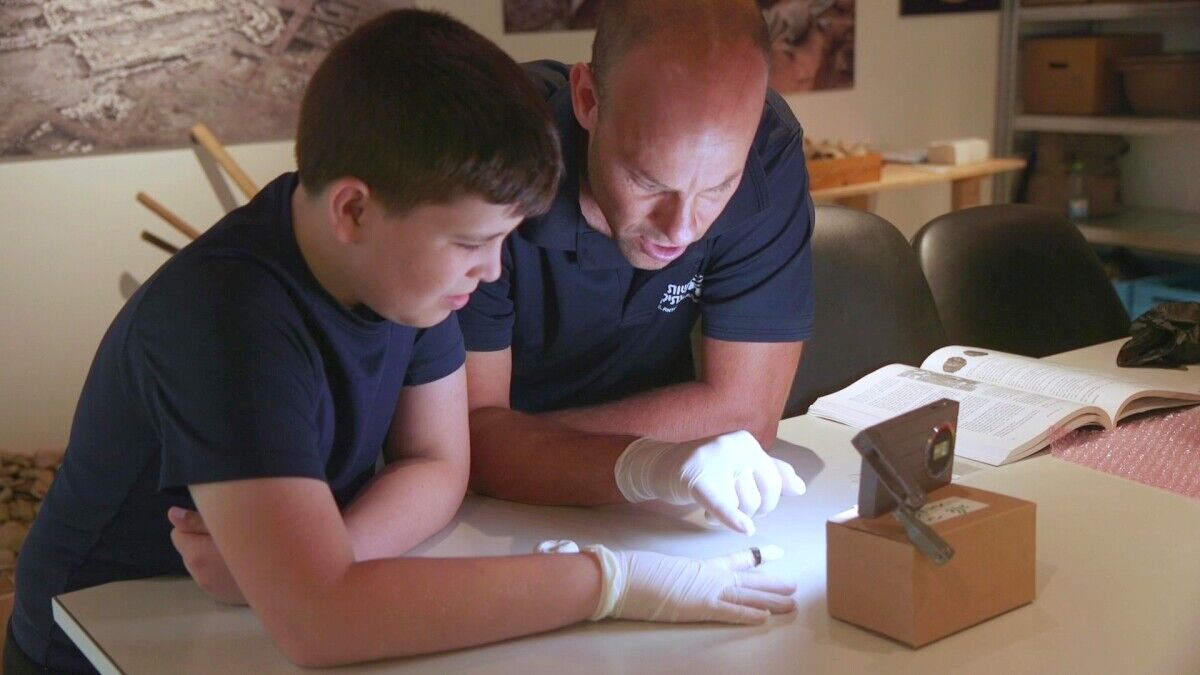Thirteen-year-old Yair Whiteson and his father, who had just returned from four months of service in the army reserves, were out for a hike to spend quality time together.
While trekking Mount Carmel near their home in Haifa, the young Whiteson saw an intriguing green object on the ground. “At first, I thought it was just a rusty bolt,” Yair said, but he soon realized it was a corroded ring with some sort of engraving of a “warrior.”
Taking it home, the family contacted Nir Distelfeld, inspector at the Theft Prevention Unit of the Israel Antiquities Authority (iaa). An iaa team, with the assistance of Prof. Shua Amorai-Stark (an expert in ancient rings and amulets), studied the find.
“On this beautiful ring, preserved in its entirety, is the image of a helmeted naked figure. In one hand she holds a shield and a spear in the other,” explained Distelfeld and Dr. Eitan Klein, in a press release issued today.
Yair’s identification of the figure as a warrior is very close to reality. The figure is apparently the goddess Minerva from Roman mythology, known also as Athena in Greek mythology. This goddess, who was very popular during the Roman period in the land of Israel, was considered, among other things, as the goddess of war and military strategy, and also as the goddess of wisdom.

The researchers believe that the bronze ring likely belonged to a woman or girl of the Late Roman Period (second–third centuries c.e.).
There are many possibilities for how the ring ended up on Mount Carmel. The findspot is below Khirbet Shalala where there are ancient Roman farmstead remains near an ancient rock quarry and burial caves. “The ring may have belonged to a woman who lived on this farm. Or, it might have fallen from a quarry worker, or it may have been a burial offering from these nearby graves. There are many possibilities,” say the researchers.
The discovery was a treat for Yair Whiteson. “I am curious about fossils and rocks and love to collect them,” he said. He received a Good Citizenry commendation for notifying the authorities of the find.

The archaeological site of Khirbet Shalala, which is near the ring’s findspot, was explored and documented by Israeli archaeologist Prof. Ruth Amiran and later by Mount Carmel expert Prof. Shimon Dar. “The ring now connects to data gathered here in earlier excavations and surveys and sheds additional light onto this site,” Distelfeld and Dr. Klein conclude.
The ring will be displayed to visitors as part of the IAA summer tours at the Jay and Jeanie Schottenstein National Campus for the Archaeology of Israel, in Jerusalem.

